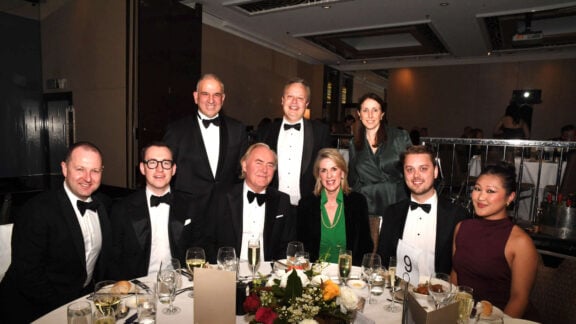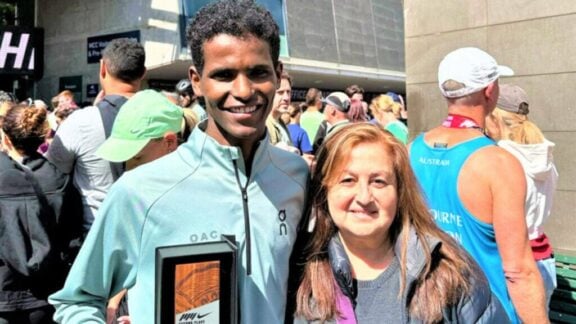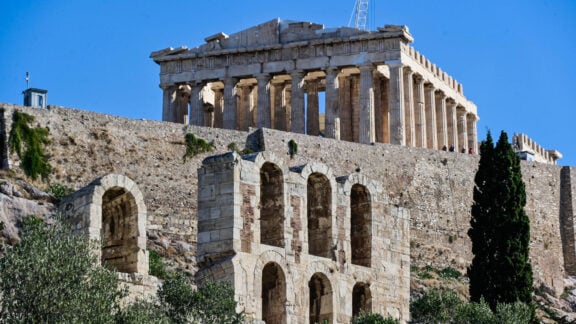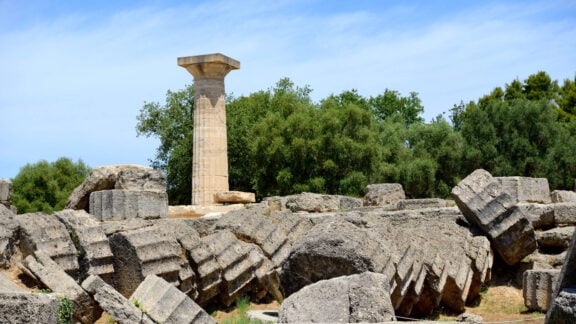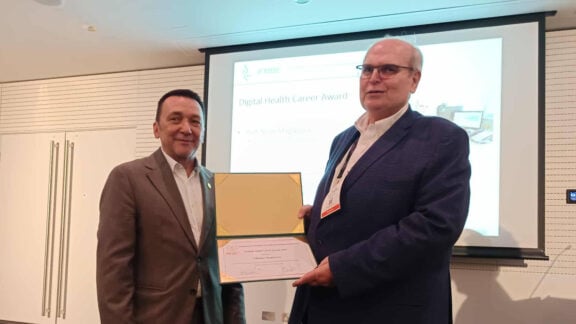Twenty years ago, our son delivered an astonishing revelation at a family dinner. He had learned that he and his father were descendants of Ghikas Voulgaris—one of the first Greek convicts in Australia, a native of Hydra, and a pirate.
My husband’s reaction was one of amazement and curiosity. Mine was pure delight—being the family historian suddenly looked far more exciting.
The following day I opened my well-worn atlas and ran my finger along the Peloponnese coast, stopping at the tiny speck off the Saronic Gulf: Hydra.
I was totally hooked.
My first stop was the seminal work by Philhellene, Hugh Gilchrist, ‘Australians and Greeks’ Volume I. Two chapters were dedicated to the nine pirates, covering their arrest in 1827, trial in 1828 resulting in a guilty verdict and death sentence for seven, commuted to transportation to New South Wales in 1829.
Because their piracy happened during the Greek War of Independence, and given it was the basis of their defence at their trial, the prevailing contemporary view suggests they were freedom fighters or palikaria: patriots who attacked Turkish and Egyptian forces.
That interpretation is supported by the fact that the Greek government intervened to secure their pardons in 1836.
But something didn’t gel for me.

Their robbery more closely resembled slapstick comedy than the action of freedom fighters.
They boarded and robbed a friendly ship, missed the gold on board completely, and despite frightening the wits out of the ship’s clerk, they hurt no one.
They even left the sulphur behind, a valuable wartime resource that true freedom fighters or even pirates might have taken first.
That was why the Maltese court didn’t accept their defence.
But at least they didn’t appear to be hardened criminals.
With my husband’s encouragement, I embarked on an exploration across New South Wales and the ACT, immersing myself in archives and libraries.
However, the true turning point came unexpectedly at Christmas in 2017—under the Christmas tree, tied with a ribbon, was a plane ticket to Hydra—a thoughtful gift from my husband.
Ghikas’ great-great-grandson’s generosity changed me from armchair historian to globetrotting researcher.
I began with two weeks on their native island of Hydra, followed by a week in Malta where they stood trial. A day trip to Portsmouth, serendipitously guided by a retired admiral and his wife shed light on the setting before their departure for the colony. Finally, I spent two weeks combing through historical documents at the UK National Archives at Kew.
Back in Australia, I continued to study original documents, rare books, and histories, including government correspondence and Hugh Gilchrist’s papers. Online resources like Trove also proved invaluable.
Additionally, I visited various locales to absorb the atmosphere of the places Ghikas trod. I attended a service at his graveside conducted by Archbishop Makarios.
What I found did not always agree with the well-established and accepted narratives.
In reality, it dramatically contradicted a couple of fundamental assumptions in what had long been accepted as fact.
I had set myself specific goals: understanding Ghikas’ family background was crucial, for it would provide context for his actions and motivations.
Plus, it was rather intriguing to consider the possibility of being married to the descendant of a Greek shipowner!
Hugh Gilchrist had posited, because Ghikas’ death certificate identified his father as Nicholaos Bulgaria, ‘Gentleman’ of Hydra, that Ghikas might be the son of one of six brothers of the powerful family. Yet Ghikas was missing from the family’s records.
Historian Maria Voulgaris on Hydra directed me to the Athenian genealogist, Dimitris Mavrideros. We began a delightful correspondence by his preferred method: traditional postage.

In our charmingly formal exchanges, he addresses me as Mrs. Dark, and I reciprocate by referring to him as Mr. Mavrideros. I hope to meet him in person when I return to Hydra and Athens in May (2024).
Despite his recent publication on the Voulgaris family, which he sent me, our collaborative efforts yielded no concrete evidence linking Ghikas to the famous lineage.
However, intriguing hints surfaced. Ghikas’ Christian name, for instance, could potentially be traced back to the Voulgaris’ paternal grandmother, Eleni Ghika, from another powerful Hydriot family.
Then, when Mr Mavrideros supplied the Christian names within Nicholaos’ family, and I contributed the Christian names of Ghikas’ own children, the strikingly mirrored duplications appeared conclusive.
Mr Mavrideros made the deduction that Ghikas’ father was indeed the wealthy Nikolaos, and Ghikas’ mother was Xanthe Nikolaki. His final verdict: ‘I understand that with all the above information there are no mysteries any more left.’
I haven’t attempted similar genealogical research on the other crew members, so I can’t speak about their backgrounds.
Having resolved the question of ancestry as best we could, my focus shifted to the act of piracy itself, and the arrest: nine young Hydriot men on the Herakles robbed the Maltese ship the Alceste, just off the coast of Africa.
This was a considerable distance from their home port, suggesting a level of proficiency in sailing and navigation.
And they were arrested days later by the English anti-pirate ship, the Gannet.
Seated in seat 44B of the hushed reading room in the UK National Archives in Kew, I awaited the documents I’d ordered from Australia with a hint of anxiety. Would they actually let me touch these nearly 200-year-old records?
Then, the trolley arrived, laden with the Gannet’s logs and ship’s muster.
My anticipation reached breathlessness as I turned the pages of the captain’s log towards the crucial date, 31st July 1827. Then, it appeared, written in ink in the captain’s hand: the Gannet had intercepted a pirate ship and taken its Greek crew on board—a staggering 43 men were taken captive!
My thoughts were whirling as I put the log aside and opened the muster, the book where the names of all on board should be recorded.
There, to my delight, I found the names of the Herakles’ captives—including Ghikas and his friends. Only Damianos Ninis’ name was missing, but I have a theory about that—a story for another day.
The unchallenged belief that the Herakles crew numbered nine was shattered. The misbelief had probably arisen because the crew of the Alceste could only identify nine individuals of the 43.
I wanted to scream to the rafters, but I settled instead for whispering my news to the researcher in 44A, who high fived me.
This revelation changed my perception of the Herakles’ piracy operation.
The increased crew size added a more serious dimension to the story, but their amateurish approach suggested they were more likely sailors than professional pirates or trained palikaria.
Their lack of expertise and the prevailing circumstances suggested desperation born of war—lost ships, disrupted trade, unemployment, food shortages, and the necessity to feed themselves and their families.
But if so, what of Ghikas, from a wealthy family? Like any of the crew, he could potentially have been driven by a myriad of other motivations, including bravery, idealism, naivety, patriotism, coercion, power, peer pressure, a thirst for adventure or financial gain.
And it could have been his wealthy family’s connections that ultimately secured their pardon.
This search was raising as many questions as it resolved, even as it shed light on another puzzle: the only ship ‘Herakles’ I’d uncovered in the Hydra archives seemed rather too big for a crew of nine.
But 43 made it plausible.

And it was partly owned by Ghikas’ cousin Dimitris, destined to be one of the first prime ministers of the new state of Greece.
I moved on.
There was no mention in the current literature of what gaol had held them in Malta.
With the discovery of the Maltese ‘Blue Book’ for that year, I was able to deduce, using the number 43, and a reference to ‘Greek pirates’, that they were held in the Castellania Gaol below the Law Courts, originally a palace of the Knights of St John.
Before leaving Australia, I secured permission to visit, and while I was there, I was given a guided tour of the underground cells beneath the current Department of Health, and the room where the trial was held, architecture intact.
Their convict ship, the Norfolk, set sail from Portsmouth. So how had they arrived there, and where were they held while they awaited departure?
A thought struck me. Portsmouth’s infamous hulks—decommissioned ships transformed into floating prisons—were cesspools of misery and disease.
Imagining the Hydriots in such dire accommodation seemed almost too sensational.
Compelled by this thought, I dug deeper at Kew Archives. When I opened the prisoner list for the York—the most crowded and dreaded of the hulks, housing 500 prisoners—there on the page were their names.
This prisoner register also contained the name of their transport ship from Malta: the Onyx.
The puzzle pieces were falling into place.
On the matter of the ‘unknown fate’ of their pirate ship, the Herakles, I had almost given up, because I’d used all possible spellings in the search—Herakles, Hirakles, Ercules, Irakles, Iraklis, Hercules—and found nothing.
But one day while searching for something totally different, I came across an 1829 London Gazette, and in it, a notice that John Atkins and Son, Agents, had sold the ‘Erakles’.
The proceeds had been distributed on a sliding scale based on seniority, to the Admiral, Captain Brace of the Gannet, and his crew.
So Ghikas’ cousin did lose his ship—doubtless unwelcome news. This might explain Ghikas’ possible disinheritance and erasure from the family’s history.
As for his employment in New South Wales, the convict indents on arrival in Sydney showed him as assigned to the Colonial Secretary, Alexander Macleay.
This had prompted Gilchrist to say, ‘It is unlikely that (Ghikas) remained in the service of Macleay after his parole in 1835.’
Gilchrist also stated that by 1836 Ghikas was in the employ of the Ryries at Arnprior north of Braidwood, where he was married by an ‘unrecorded celebrant’ to Mary Lyons, an Irish servant girl.
I think it unlikely that Ghikas ever worked for Macleay.
My reason is this: in the New South Wales State Library I found a letter from Stewart Ryrie, the Deputy Commissary and the owner of Arnprior, only days after the arrival of the Norfolk into Port Jackson in 1829, asking Macleay to reassign Ghikas to him.
In the same library I also found the ‘unknown celebrant’: Roman Catholic priest Father John Joseph Therry recorded in his diary that he married Ghikas and Mary at ‘Aron Prior’, not in 1836 as thought by Gilchrist, but on the 17th September 1835.
This discovery, a small piece of the puzzle, underscores a larger truth. I’m reminded that unravelling history is a team effort—that our understanding is built on the contributions of countless individuals.
So, the jury is still out on whether I am married to the descendant of a pirate, a freedom fighter, or a silly boy. It’s a difficult call because my husband shows signs of all three…
And history, like my husband, isn’t easily categorised with neat labels.
Shelley Dark’s novel, “Son of Hydra’, an historical adventure romance about Ghikas Voulgaris, will be released in 2025.
Follow its progress on her website or Instagram: @shelleydark


